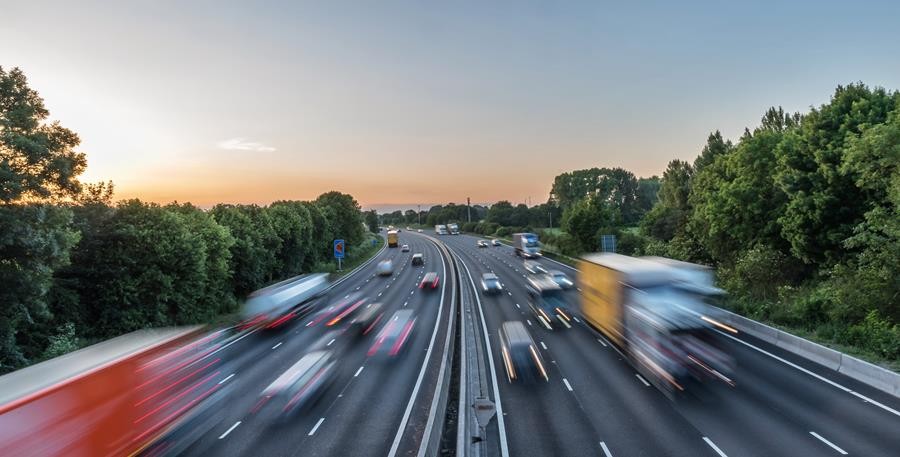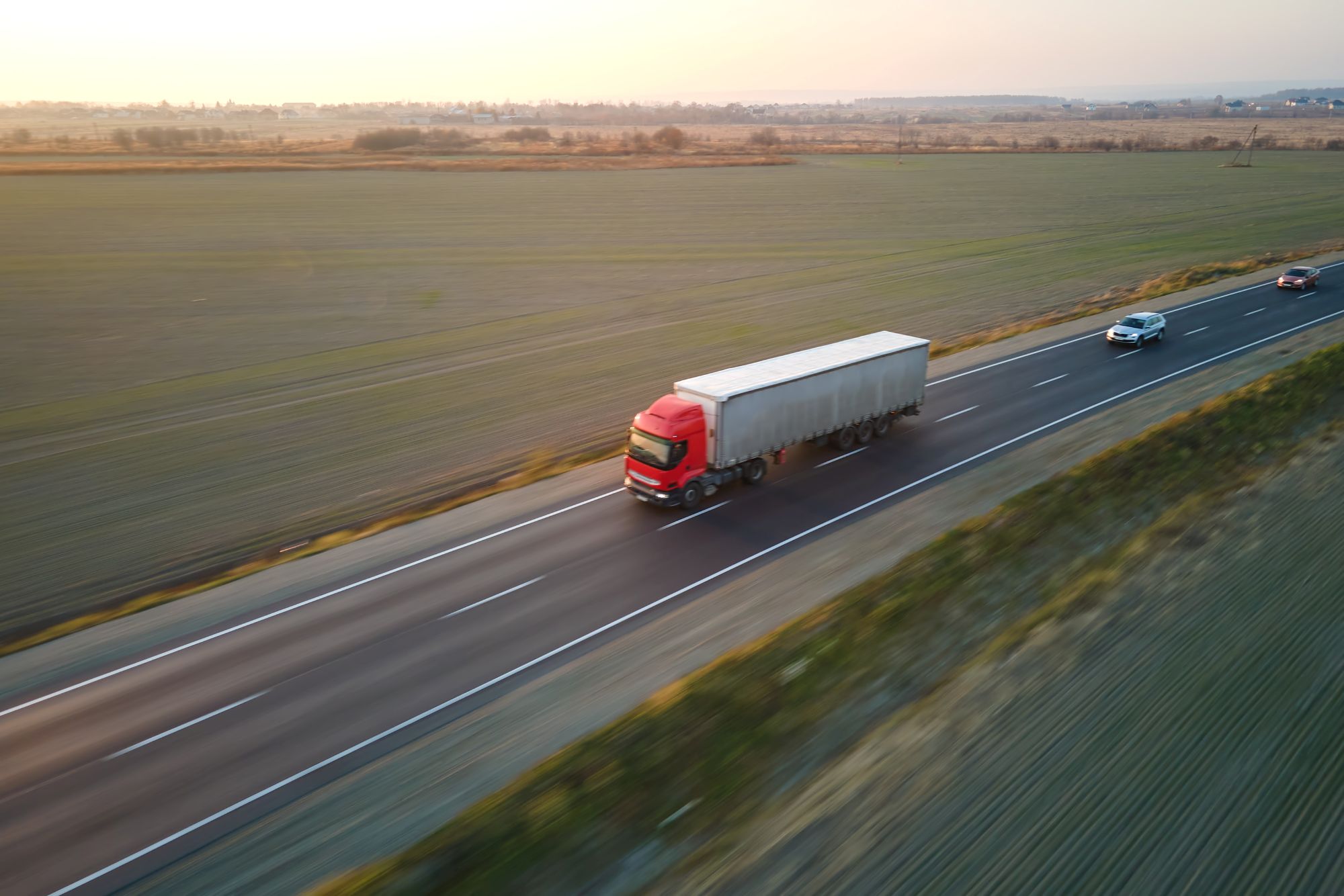
Susie Jones
El camino hacia la sostenibilidad: El reto europeo de las emisiones en el sector del transporte
Creado: 08/08/2024
•
Actualizado: 08/08/2024
Un informe de 2024 de Clean Technica reveló que más del 25% de las emisiones del tráfico rodado proceden del sector del transporte en Europa, siendo los vehículos pesados responsables del 85% de las emisiones (los autobuses y autocares representan el resto).
Al ritmo actual, el sector del transporte por sí solo representará casi la mitad de las emisiones de gases de efecto invernadero de Europa en 2030 - las emisiones del transporte en Europa han seguido aumentando en más de una cuarta parte desde 1990. Las emisiones de toda la economía han disminuido; sin embargo, desde el máximo alcanzado en 2007, el sector del transporte se ha descarbonizado más que tres veces más lentor que el resto de la economía.
¿Cuál es la causa del aumento de las emisiones de CO2 en el sector del transporte?
Desde la proliferación del comercio electrónico y los servicios de entrega a domicilio, la demanda de más camiones en la carretera ha aumentado considerablemente. En consecuencia, el aumento de la demanda ha provocado un incremento de las emisiones de CO2 en el sector del transporte.
Un informe de Clean Technica sobre el tonelaje del transporte nacional de mercancías en los distintos modos de transporte (carretera, ferrocarril y agua) revela que el transporte de mercancías por carretera predomina más en Europa que el ferrocarril y el agua, en comparación con otras zonas geográficas (EE.UU. e India). Aunque China depende más del transporte de mercancías por carretera, el informe revela que el país cuenta con unos 600.000 camiones eléctricos para el transporte de mercancías.

¿Qué planes existen en Europa para reducir las emisiones de CO2?
El Parlamento Europeo aprobó la Ley Europea del Clima para hacer frente al aumento de las emisiones de CO2. Como parte de esta ley, el objetivo de la UE de reducir las emisiones netas de gases de efecto invernadero para 2030 se ha incrementado al menos hasta el 55%, lo que hace legalmente vinculante la neutralidad climática para 2050.
En mayo de 2024, los países de la UE aprobaron una ley para reducir drásticamente las emisiones de CO2 de los camiones. La nueva ley exigirá que los nuevos vehículos pesados que se vendan en la UE a partir de 2040 estén libres de emisiones, al tiempo que impondrá una reducción del 90% de las emisiones de CO2 de los nuevos vehículos pesados para ese mismo año. Los fabricantes deberán vender una gran cantidad de vehículos pesados totalmente libres de CO2 -por ejemplo, eléctricos y de hidrógeno- para compensar las ventas restantes de vehículos que emiten CO.
¿Qué medidas pueden tomar los gestores de flotas para reducir las emisiones de CO2?
Los gestores de flotas pueden tomar medidas para reducir sus emisiones de CO2:
El frenado brusco, la aceleración rápida y el ralentí pueden aumentar el consumo de combustible y las emisiones de gases de efecto invernadero. Aunque controlar el comportamiento del conductor puede ser complicado, la tecnología de IA puede proporcionar información continua a los conductores y a los gestores de flotas. Más información sobre cómo la IA puede influir positivamente en la sostenibilidad en el sector del transporte.
Las flotas con vehículos más antiguos pueden pasarse al aceite vegetal tratado con hidrógeno (HVO), al hidrógeno o a los vehículos pesados de propulsión eléctrica para reducir significativamente las emisiones. Sin embargo, los gestores de flotas deben tener en cuenta la distancia que pueden recorrer los vehículos de combustible alternativo y las implicaciones económicas.
Cuenta SNAP](https://snapacc.com/) permite a los gestores de flotas reducir el kilometraje de sus desvíos - con más de 600 socios de servicio disponibles para los clientes de la Cuenta SNAP, los gestores de flotas pueden planificar paradas nocturnas para sus conductores en ruta.
¿Existe la infraestructura necesaria para recargar los camiones eléctricos?
Según un estudio de PwC, en 2030 un tercio de todos los camiones de Europa serán eléctricos. Dado que las empresas de flotas están dando pasos hacia la electrificación, las paradas de camiones de toda Europa deben ser capaces de satisfacer la demanda de estaciones de carga eléctrica.
Proporcionar la infraestructura supondrá un coste para muchas paradas de camiones y estaciones de servicio. Sin embargo, las que ya cuentan con cargadores para vehículos eléctricos están bien situadas para aprovechar las futuras oleadas de camiones eléctricos. En 2030, las estaciones públicas de recarga en Europa superarán las 3.600 - La UE ha presentado una ambiciosa ley para la recarga con el Reglamento de Infraestructuras para Combustibles Alternativos (AFIR). El AFIR planea equipar la red principal de carreteras con puntos de recarga cada 60 km, proporcionando suficiente energía de recarga y capacidad de hidrógeno para que el 9% de las flotas de camiones y autocares sean de cero emisiones en 2030.
¿Qué país europeo emite más CO2?
En 2021, Alemania, Francia e Italia fueron responsables de las mayores emisiones globales de gases de efecto invernadero (GEI), que oscilaron entre 375.000 y 740.000 ktoneladas de CO2. Sin embargo, los países con mayor población producen más emisiones de GEI, por lo que ver las emisiones globales de gases de efecto invernadero ofrece una imagen distorsionada.
Una visión imparcial de las emisiones ofrece un panorama diferente: Luxemburgo, Irlanda y la República Checa produjeron las mayores emisiones per cápita de la UE en 2021.
¿Cuál es el modo de transporte de mercancías más respetuoso con el medio ambiente?
El transporte de mercancías por ferrocarril es uno de los modos de transporte más limpios, pero también ofrece otras ventajas:
Reduce la congestión de las carreteras, lo que contribuye a mejorar la calidad del aire.
El ferrocarril ofrece una forma más rápida de transportar mercancías y elimina los obstáculos del tráfico pesado.
Los camiones de combustible alternativo son otra forma ecológica de transportar mercancías. El Aceite Vegetal Hidrotratado (HVO) puede reducir inmediatamente hasta el 90% de las emisiones de efecto invernadero en comparación con el diesel estándar a lo largo del ciclo de vida del producto. Certas Energy HVO está detrás del cambio a una alternativa más limpia - ayudando a las empresas a cumplir sus objetivos de sostenibilidad y dar pasos significativos hacia su futuro neto cero.



